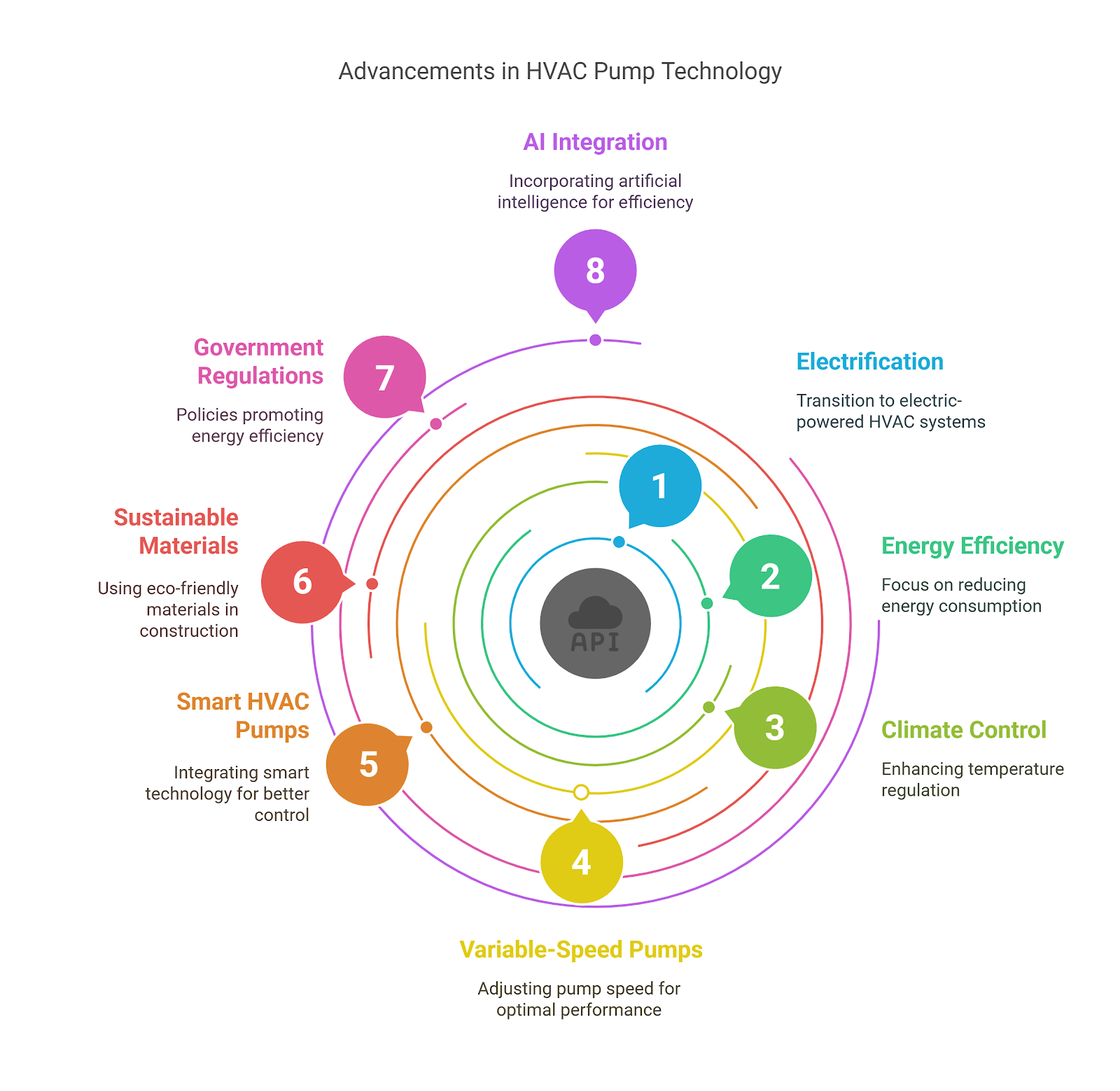How Are Smart and Sustainable Systems Redefining the HVAC Pump Industry
In the past few years, HVAC pump technology has undergone significant advancements, including electrification, high energy-efficiency HVAC systems, climate control in HVAC systems, and others. Moreover, rise in adoption of variable-speed and smart HVAC pumps in commercial infrastructure development leads to enhanced performance of energy-efficient HVAC systems, further increasing their demand in the sector. These pumps are primarily used to optimize the performance if heating, ventilation, and air conditioning systems.
Sustainable and energy-efficient HVAC systems
Rise in trends for more energy efficient and sustainable HVAC pumps is a major factor driving the sector’s growth. Government authorities and end users globally are demanding systems, including HVAC pumps, which consume less energy and reduce the impact on the environment. This demand necessitates innovations and advancements in technologies in heat pumps, including low-temperature heating systems, fan converters, and more. In addition, rise in use of sustainable materials in HVAC pumps for construction and renovation projects is expected to significantly drive growth in the sector. For instance, according to the U.S. Department of Energy, over 75% new HVAC installations in the U.S. included energy-efficient systems, in 2024. This trend aligns with the strict regulations, introduced by DOE and the Environmental Protection Agency (EPA), with an aim to promote sustainable building practices and reduce carbon emissions. AI is being deployed in HVAC systems to modernize and enhance energy efficiency, leading to a rise in sustainability and smart integration in the industry. In addition, in 2025, Grundfos launched the UPM10 circulator pump, which is critically acclaimed for its design and innovation. Its main aim of the system is to help building operators by lowering carbon emissions and reducing energy consumption.
Smart HVAC and automation
The HVAC pump industry has witnessed growth owing to the inclusion of smart technologies and systems in HVAC pumps. According to AMR, the industry is estimated to rise at a CAGR of 5.7% from 2025 to 2034. This allows for convenient remote monitoring and control, which in turn enhances energy efficiency. Integration of smart systems in buildings demands data-driven design tools, which maximize the efficiency of the buildings operations. In addition, integration of HVAC systems with building Automation Control Systems (BACS) enables centralized controlling of all building systems from one platform only. For instance, in July 2020, the European Union published the Building Automation Control Systems (BACS) Decree. In January 2025, the decree mandated that automation and control systems are implemented in non-residential tertiary buildings.
Carrier and Viessmann Canada’s modern-age HVAC pumps
Carrier launched the AquaSnap® 61AQ R-290 high-temperature heat pump in February 2025, with an aim to drive energy efficiency and sustainable heating solutions. The company took significant steps toward increasing the adoption of sustainable systems in commercial end use. With this launch, Carrier addresses decarbonization concerns, leading to setting new standards for performance and sustainability in the industry.
Moreover, in February 2025, Viessmann Canada launched a new product portfolio of heat pumps, which are tailored for residential and light commercial application. Viessmann Canada is one of the leaders in manufacturing heating and renewable energy efficient systems. The product line includes Vitocal 100-s, which is a single-zone air-to-air ductless heat pump designed to provide comfort even in extreme climates. The Vitocal 100-s is engineered to integrate advanced HVAC pump technology to enhance cooling and heating performance of the system. The focus here too lies in energy efficiency and sustainability.
Summing up
With the rise in advancements in technology and increase in sustainability initiatives, the HVAC pump industry is expected to experience notable growth in the coming years. Key players operating in the sector are continuously developing smart, energy-efficient systems, that is likely to meet the global demands for climate control needs of consumers and stringent government rules in the future.
More Reports:

Comments
Post a Comment